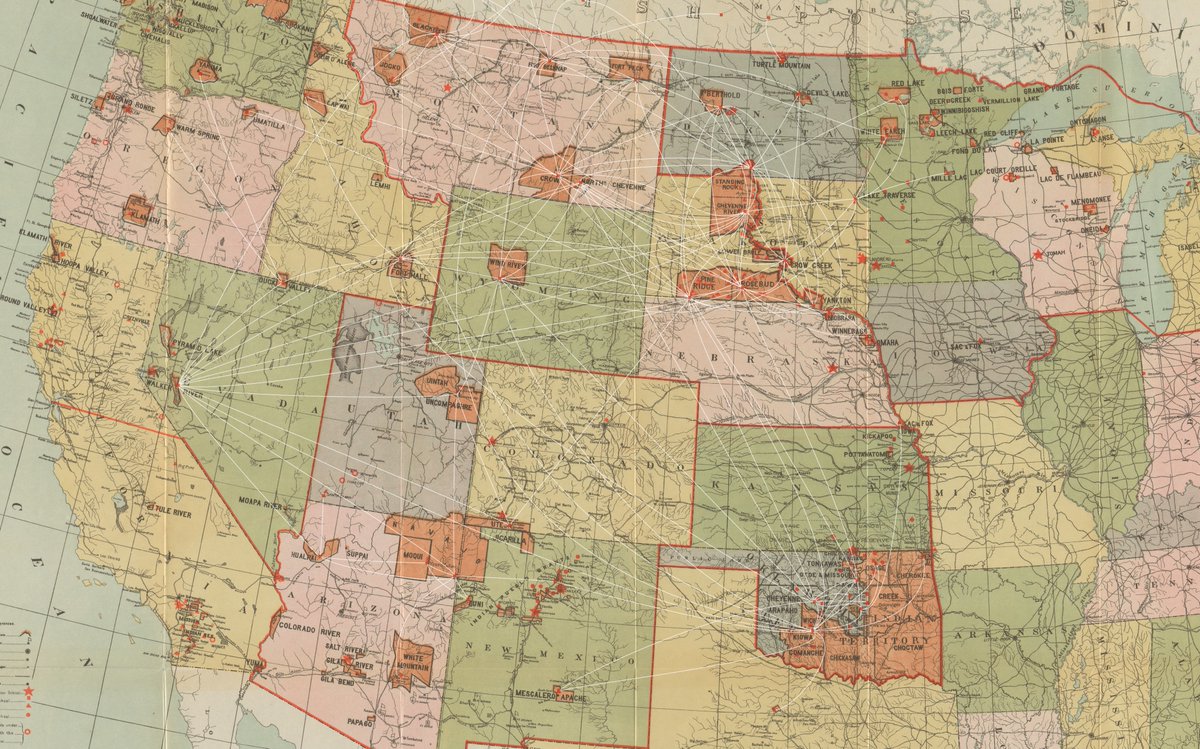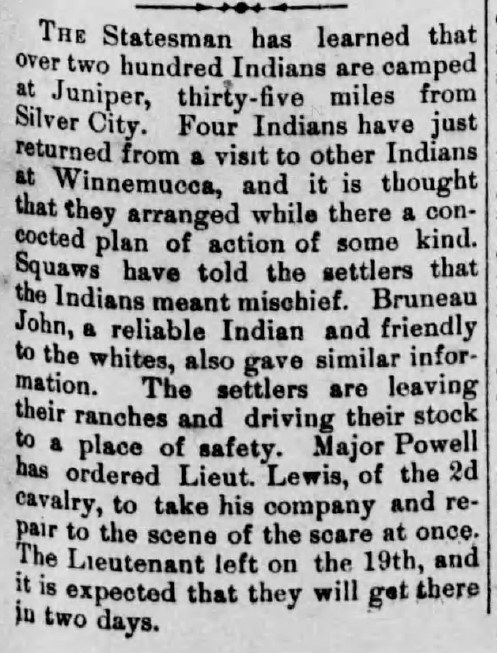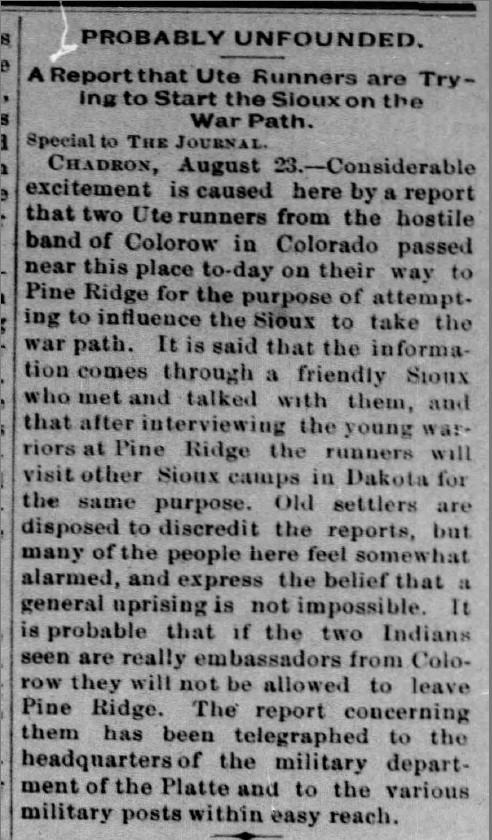The US govt. went to great lengths to secure reservation borders in the last quarter of the nineteenth century. But Native American mobility couldn& #39;t be contained. It is a lesson in the futility of controlling historically arbitrary, colonially defined borders. Thread:
Restricting the free movement of colonized peoples was an expensive, decades-long task for the US government. Simultaneously, millions of European immigrants found a home in the US (many taking advantage of the Homestead Act& #39;s "free land" in the West).
Geographic isolation was supposed to be a solution to the white America& #39;s “Indian Problem” - keeping Native Americans in a space where they could be controlled and assimilated. Driven by racism, Indian Affairs directed reservation agents to make "every effort" to "prevent...
...peaceable Indians [from] leaving the reservation" under the threat of US Army violence and other forms of punishment. Some travel was permitted under tight restrictions. But there was so much "illicit" movement, especially between reservations, that agents could not keep up.
Individual Natives and small parties often traveled off reservation at will. If an agent discovered that a large party had left, the US Army would often round them up. Indian police forces spent much of their time doing the same while surveilling border-crossers.
But Indian Affairs lacked the manpower to patrol the peripheries of reservations. In 1888, for instance, with Kiowas & Comanches visiting Cheyennes & Arapahos without restraint, the agent sent just 10 Indian policemen to patrol the 100-mile-long border that divided the reserves.
Punishments varied for leaving the reservation without permission. Losing rations could be a consequence. A stay in the guardhouse was also common punishment, especially if the visitors were deemed to be doing something "nonprogressive." Colonial authority was exercised.
Natives moving off reserves brough out deep-seated fears of an "Indian Outbreak" in paranoid white settlers. Even a decade after the last "Indian wars," newspapers continued to report that tribes were up to no good on their intertribal visits.
Whites suffered from a fear of any intertribal interactions, a pan-Indian phobia, because they knew the history of intertribal power.
Racism undoubtedly impacted Native mobility. The Weekly Missoulian, for instance, opined in 1879 that it was “better that the two races...red and whites...should be kept apart.” (When Native mobility was economically advantageous for whites, fewer complained about it.)
You can learn more about Native mobility in my book. Western Native Americans refused to be kept as prisoners on reservations in the late nineteenth century. https://www.amazon.com/dp/0806167254 ">https://www.amazon.com/dp/080616...
Their tenacious mobility (defined not only as the freedom of geographic movement but also the ability to share ideas and information widely) allowed western Natives to create vast networks of communication that traversed reservation boundaries. https://nativeamericannetworks.com"> https://nativeamericannetworks.com

 Read on Twitter
Read on Twitter




